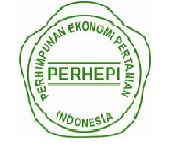Peningkatan Produksi Kakao melalui Penerapan Teknologi Kakao Sehat pada Kelompok Tani ”Wonga Mengi” di Desa Kedebodu, Kecamatan Ende Selatan, Kabupaten Ende, Propinsi Nusa Tenggara Timur
Abstract
Title: Increasing of Cocoa Production through the Application of Healthy Cocoa Technology in the "Wonga Mengi" Farmer Group in Kedebodu Village, South-Ende District, Ende Regency, East Nusa Tenggara Province. Kedebodu Village is located 12 km from the capital city of Ende Regency, which is part of the population earning a living as a cocoa farmer. The average land area of cocoa farmers is ± 2 ha/person with average productivity of 140 kg/ha which is very far from the ideal cocoa potential of 1,150 - 2,000 kg/ha. This condition is caused by the age of cocoa plants that are no longer productive, lack of care and high levels of pests and diseases. The service activity aims to increase the knowledge and skills of cocoa farmers in applying healthy cocoa technology so that the production of cocoa plants, especially in the "Wonga Mengi" farmer group in the village of Kedebodu, can be increased. The method used is participatory in the form of field schools by providing material and its application directly in the garden. There are two main program activities, namely providing direct assistance in the form of superior cocoa seedlings in the form of cuttings or entries and pruning tools as well as providing assistance in the application of healthy cocoa technology. After mentoring for about 4 months, it is known that there is an increase in farmers' knowledge about the application of healthy cocoa technology by an average of 72.22% and skills by 67.5%. Until now there has been an increase in fruit volume both in quantity and quality, which is shown by an increase in the number of ovaries/trees (36.68%), the number of fruits/trees (20%), and the dry weight of seeds/trees (30.2%). With this service, an increase in the knowledge and skills of the "Wonga Mengi" farmer group in implementing healthy cocoa technology has an impact on increasing cocoa production.
Keywords
Full Text:
PDF (Bahasa Indonesia)References
Agussalim. (2016). Efektivitas Pupuk Organik Terhadap Produktivitas Tanaman Kakao di Sulawesi Tenggara. Jurnal Pengkajian Dan Pengembangan Teknologi Pertanian. https://doi.org/10.21082/jpptp.v19n2.2016.p167-176
Angela. (2019). Pengelolaan pemangkasan kakao. Journal of Chemical Information and Modeling, 53(9), 1689–1699. https://doi.org/10.1017/CBO9781107415324.004
Angela & Efendi, D. (2015). Pengelolaan Pemangkasan Tanaman Kakao (Theobroma Cacao L.) Di Cilacap, Jawa Tengah. Buletin Agrohorti. https://doi.org/10.29244/agrob.3.3.285-293
BPPS Ende. (2016). Potensi Tanaman Perkebunan Kabupaten Ende. https://endekab.bps.go.id/subject/54/perkebunan.html#subjekViewTab3
Baihaqi, A., Hamid, A., Anhar, A., Abubakar, Y., Anwar, T., & Zazunar, Y. (2015). Penerapan Teknik Budidaya Serta Hubungan Antara Pemangkasan Dan Peningkatan Kesuburan Tanah Terhadap Peningkatan Produktivitas Kakao Di Kabupaten Pidie. Jurnal Agrisep, 16(2), 54–61. https://media.neliti.com/media/publications/13209-ID-penerapan-teknik-budidaya-serta-hubungan-antara-pemangkasan-dan-peningkatan-kesu.pdf
Bone, K. (2017). Pemanfaatan limbah kulit buah kakao sebagai pupuk organik di kecamatan lamuru kabupaten bone. Jurnal Balireso.
Evizal, R., Prasmatiwi, F. E., Wibowo, L., & Rahmawati, W. (2017). Mendorong Rehabilitasi Kebun Secara Mandiri. http://repository.lppm.unila.ac.id/5287/1/RusdiEvizalSemAbdi2017.pdf
Firmana, F., & Nurmalina, R. (2016). Dampak Penerapan Program SLPTT terhadap Pendapatan Usahatani Padi di Kecamatan Telagasari Kabupaten Karawang. Agrikultura. https://doi.org/10.24198/agrikultura.v27i1.8475
Hexa, H., Maman, U., & J, J. (2019). Efektivitas Penyuluhan Metode Sekolah Lapang Terhadap Penerapan Standar Operasional Prosedur (SOP) Budidaya Anggrek Tanah (Teresterial) di Kota Tangerang Selatan. AGRIBUSINESS JOURNAL. https://doi.org/10.15408/aj.v11i1.11832
Khairul, U., Trizelia, T., & Reflin, R. (2018). Pemberdayaan Kelompok Tani Melalui Pelatihan Pengendalian Hama dan Penyakit Tanaman Kakao di Kanagarian Campago Kabupaten Padang Pariaman. BULETIN ILMIAH NAGARI MEMBANGUN. https://doi.org/10.25077/bnm.1.4.88-95.0
Manalu, R. (2018). UNTUK MENINGKATKAN PENDAPATAN PETANI ( Processing of Smallholder Plantations Cocoa Production to Increase Farmers Income ). 99–111. jurnal.dpr.go.id › index.php › ekp › article › download
Masnilah. (2019). ORGANISME PENGANGGANGGU. Pnh 1503. https://www.academia.edu/40591975/Penyakit_Pada_Tanaman_Kakao_dan_Teknik_Pengendaliannya
Murtiningrum, M., & Bantacut, T. (2016). Review : Potensi Dan Arah Pengembangan Agroindustri Berbasis Kakao Di Provinsi Papua Barat. Agrointek, 10(1), 1. https://doi.org/10.21107/agrointek.v10i1.2020
Rubiyo. (2012). Peningkatan Produksi dan Pengembangan Kakao ( Theobroma cacao L. ) di Indonesia. Jurnal Tanaman Industri Dan Penyegar - Journal of Industrial and Beverages Crops Research, 3(1), 33–48. https://doi.org/10.21082/jtidp.v3n1.2012.p33-48
Siswanto. (2012). Pengendalian-Hama-Utama-Kakao. 11(2), 103–112. http://perkebunan.litbang.pertanian.go.id/dbasebun/asset_dbasebun/Penerbitan-20141207121322.pdf
Slameto. (2014). Efektivitas Proses Pembelajaran Sekolah Lapang Oleh Komunitas Petani Di Lampung. Jurnal Agro Ekonomi, 32(1), 35–55. https://www.researchgate.net/publication/313932327_Efektivitas_Proses_Pembelajaran_Sekolah_Lapang_Pengelolaan_Tanaman_Terpadu_Padi_Sawah_oleh_Komunitas_Petani_di_Lampung/link/58b0390aaca2725b5413cafb/download
Zakil M, A. D., Rusman, Y., & Yusuf, M. N. (2017). Dampak Sekolah Lapang Pengendaaliaan Hama Terpadu (SLPHT) Terhadap Tingkat Penerapan Teknologi Pengendalian Hama Terpadu (PHT) Padas Usah Tani Padi Sawah (Oryza Sativa L.). JURNAL ILMIAH MAHASISWA AGROINFO GALUH. https://doi.org/10.25157/jimag.v1i1.285
DOI: https://doi.org/10.20961/prima.v3i2.39229
Refbacks
- There are currently no refbacks.
View My Stats

This work is licensed under a Creative Commons Attribution-ShareAlike 4.0 International License.


.jpg)



1.jpg)











